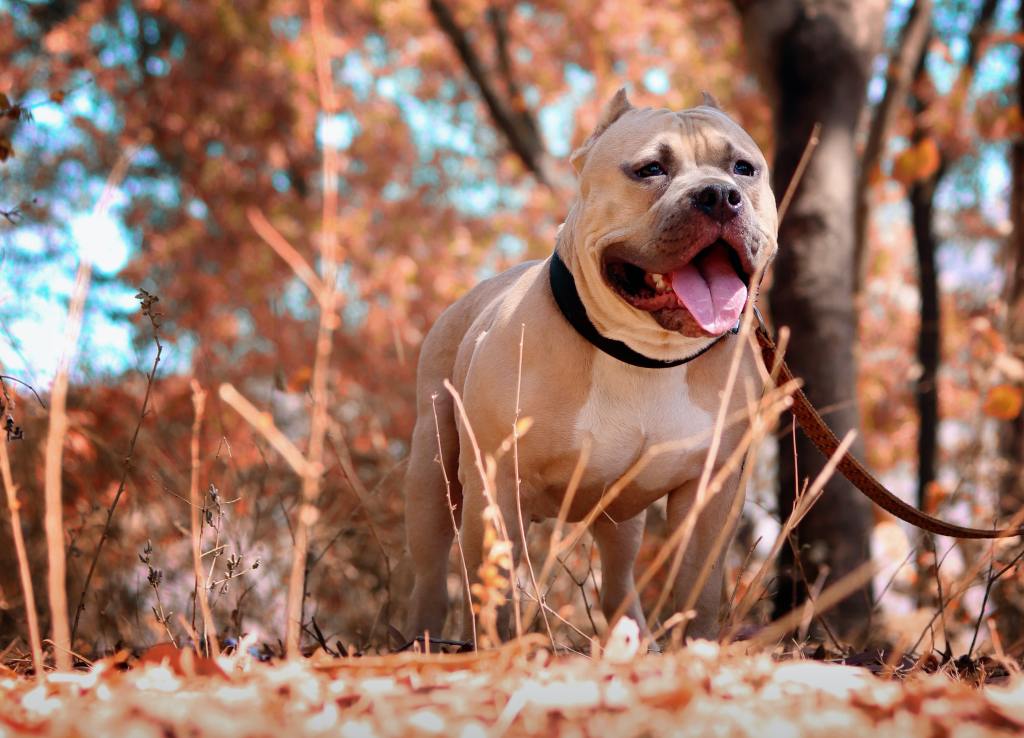Welcoming a pitbull into your home can be a rewarding experience, but it also comes with its own set of challenges. Pitbulls are often misunderstood due to their reputation as an aggressive breed, but with the right training, they can become loyal and well-behaved family pets. Positive training methods have been proven to be effective in shaping the behavior of dogs, including pitbulls.
Some dogs are mistaken for pitbulls due to their muscular build and physical characteristics. It is important to research and understand the differences between breeds to properly train your dog.

In this blog post, we will explore the power of positive training and how it can be used to raise a well-behaved pitbull. So, let’s dive in!
Use Positive Reinforcement for Behavior
This training method involves rewarding your dog for good behavior, rather than punishing them for bad behavior. Positive reinforcement can include giving your dog treats, praise, or a toy when they exhibit the desired behavior. This approach is more effective than punishment-based training, as it builds a stronger bond between the dog and their owner and encourages the dog to repeat the desired behavior.
When using positive reinforcement, it is important to be consistent and timely in the rewards you give, ensuring that your pitbull understands what behavior you are rewarding them for. With patience and persistence, positive reinforcement can be an effective way to raise a happy, well-behaved pitbull.
Focus On Consistency and Clarity
Consistency means that you should always use the same commands and rewards, and follow through with them every time. This helps your pitbull understand what is expected of them and reinforces good behavior.
Clarity means that your commands should be clear and concise, with no room for misinterpretation. Use simple words and gestures that your pitbull can easily understand, and avoid confusing or contradictory commands. By focusing on consistency and clarity in your training, you can build a strong bond with your pitbull and create a positive and rewarding training experience for both of you.
Create a Structured Routine
Dogs thrive on routine and predictability, and as such, having a structured routine will help your Pitbull to feel secure and comfortable in their environment. A structured routine involves setting specific times for feeding, exercise, training, and rest. This can help to establish boundaries and expectations for your Pitbull, which can help to prevent unwanted behaviors.
Additionally, a structured routine can also help you to stay organized and consistent with training, which is crucial for positive reinforcement. By creating a structured routine, you can ensure that your Pitbull receives the appropriate amount of mental and physical stimulation, leading to a healthier and happier dog.
Socialize Early and Often
By exposing your pup to a variety of people, animals, and environments at a young age, you are helping them develop the necessary social skills to become a well-behaved and confident adult dog. This can include everything from playdates with other friendly dogs to supervised visits to the park or pet store. The goal is to help your pitbull learn how to navigate different situations without becoming anxious or fearful, which can lead to unwanted behaviors such as aggression or destructive chewing.
Seek Professional Training Assistance
While it may seem like an extra expense, the benefits of working with a professional trainer can be invaluable. A professional trainer has the knowledge and experience to create a personalized training plan that caters to your dog’s specific needs and personality. They can also provide you with guidance and support throughout the training process, helping you stay motivated and on track. Additionally, working with a professional trainer can help you avoid common training mistakes that could be hindering your progress.
Conclusion
Positive training is an incredibly effective way to raise a well-behaved Pitbull. By using reward-based techniques, you can create a strong bond with your Pitbull while also teaching them important behaviors and commands. It’s important to remember that every dog is unique and may respond differently to various training methods.
However, with patience, consistency, and positive reinforcement, you can help your Pitbull become a happy and well-behaved member of your family. Remember to always seek professional help if you have any concerns or challenges in the training process.


Leave A Comment